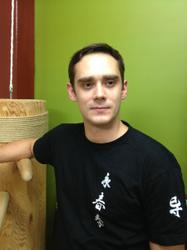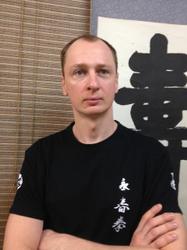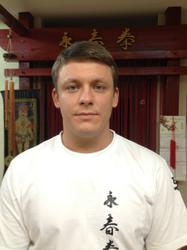Wing Chun Competitions (the Master’s speech)
To Beat or not to Beat
The first competitions were held by the Zheleznaya Fleyta’ Wing Chun Club soon after its foundation in 1982-83 (following the example of Karate groups regular competitions). They involved friendly fights on Wing Chun technique with other local clubs, such as the Triada’ Club, the Mey Hua’ Club, etc. Safety equipment was only basic and included groin-guards, chest guards, helmets, hand covers and gloves with open fingers. We did our best preparing for competitions and later, having joined the local department of the Russian Federation of Wushu under Gleb Muzrukov, we started holding competitions (in the guise of the Russian Championship) among other Wing Chun clubs from the former Soviet Republics.
Originally, the competitions comprised mere one-on-one fights, internal school competitions for the best fighter, which resulted in cut brows as well as bloody noses and lips. Regardless of the regulations, fighters would hack at each other, hitting and kicking to bring the opponent down and then grapple until the STOP signal rang out. Once, during a sporting event, a man came up to me and asked, “Mr. Martynov, I wonder where Wing Chun is.” I do not even know who he was as I didn’t ask him his name. I remember I took his words ill that day. It took me a long time to realise the sense attached to these words and go on to establish a fresh comprehension of the Wing Chun style and Wing Chun combat.
At our first Wushu championship we demonstrated Wing Chun techniques and performed mock fights. The traditional family Wing Chung schools do not hold competitions. We were aware of this.
It is not easy (but very important) to find a way to make young people realise the difference between the art of fighting and merely fighting. Drumming the same idea into the trainers’, club managers’ and federation managers’ heads is even more important. This is one of the reasons why the All-Russian Federation of Wing Chun does not hold any official competitions or, specifically, fights.
I saw six- and seven-year-old kids beating each other with boxing gloves at the event held by the Wind and Flow’ Wing Chun club in Arzamas, Russia. The local trainers must have forgotten the major principle of Wing Chun, which is counter-attack and self-defence, rather than simply attack! Kids are programmed for aggression at such clubs. Those who lose may harbour a grievance or fear, while winners may display aggression or rudeness when they grow older.
I believe Wing Chun instructors must foster in kids such qualities as attention, balance, coordination, sensitivity, as well as the ability to turn aggression into humour and play. Mutual understanding and support between young Wing Chun practitioners cannot be developed by means of competitive fighting or advantage of one over another. This should be based on educative and complementing each other qualities.
The perfect destiny for a Master is never to have to apply his fighting skills but use the Wing Chun principles in his every day life, i.e. to be agile, cheerful, steady, attentive, etc.
You might ask about a sports federation’s obligation to carry out competitions. Let us ponder this together.
What do you think about an event, which demonstrates the Wing Chun techniques, which are very complicated in terms of coordination, rhythm and plasticity? One has to possess creative thinking and the ability to get the feel of various animals in order to perform the technique properly. Without these qualities the execution of the Five animals’ form wouldn’t have a sense or practical meaning.
Another option is to try and compete in the sensitivity of hands and feet while performing the Tisao (Chi Sao) exercise, which involves pushes, holds and simulated blows. Finding a winner in such a competition would be a hard task as it is almost impossible to estimate the sensitivity levels of Tisao performers.
Such a competition, called Nianda, was held in Foshan in 1999. Watching a video record of the event I found it ridiculous! I watched experienced Masters trying to beat and defeat their opponents instead of excelling’ technically. The competition was boring and even comical at times. Can you imagine a famous Master poking his finger into his opponent’s eye and swaggering about like a pheasant during the temporary inflicted blindness of the poor fighter?
Any match against a representative of a different school, such as karate, taekwondo, boxing, sambo or kickboxing, automatically becomes a mere fight with both opponents intending to prove their own school’s superiority. Which school is better, whose drill is more effective? This dispute would most likely end up in a fight. The comprehension of Wing Chun technique comes at a mature age, after many years of training and studying its principles. Then they gradually lose their competitiveness and those who have become Masters search for competent assistants, rather than opponents.
Here is a Chinese parable about the training of a fighting rooster (in brief):
A rooster is brought to the Master to be trained for cockfights. After a few days the rooster’s owner asks the Master about his progress in training. The Master replies, The rooster is not ready yet. It’s been wandering around the yard with its feathers ruffled up. It runs away every time it sees another rooster.’
A few more days pass and the owner disturbs the Master with his questions again. No, your rooster is not ready at all. It’s been walking around the yard with a furious look, its feathers on end. On noticing another rooster it pounces on it to tear it to tatters. The owner leaves with a puzzled look and doesn’t visit the Master for a long time. One day the Master sees the rooster’s owner and says, You may take your rooster back, it is ready. It’s been quietly walking around the yard pecking grain without paying attention to other rooster’.
Is it possible to come up with a spectacular Wing Chun competition, which would be interesting for modern-day society, which tends to favour circuses? I’m not sure yet. Students and sportsmen are not inferior to artistic or rhythmic Masters in terms of fitness. Their special sense of balance shall be equal to that of tightrope walkers. Can you imagine a Wing Chun event involving contestants performing pushing exercises on special posts of a certain height, transforming then to pulling ones?
A competition in hands and feet blindfolded’ Tisao performances on small tables with an area of 4 square metres may prove to be very spectacular as well.
A free fight would be an exciting sight if it was possible to invent a special protective suit fitted with special sensors for vulnerable body areas; when a fighter took a blow to the mildly vulnerable, the highly vulnerable or the extremely vulnerable areas, a blue, yellow or red light would go off respectively. At the same time, the suit should provide body protection from heavy blows.
Theoretically, the Wing Chun technique is invincible for an opponent. Any other school, which does not use the Wing Chun principles, is doomed. Absolute management, though, requires one’s total immersion in the discipline, which is almost unachievable for ordinary worldly people. There can be no doubt that proper long-term training bears fruit ultimately. Let us remember the secrets of Wing Chun’s absolute invulnerability:
- Integral attention, vision, listening and sensation. A Master must see his opponent’s shape, stance, balance, weak points and vulnerable body areas. A Master must hear his opponent’s breath to understand the strength of its circulation. A Master must be able to estimate the level of his opponent’s sensitivity. The sense of smell makes it possible for a Master to figure out his opponent’s fear and the thickness of his body.
- Perfect reaction to an impulse. Interflowing with your partner into a single whole provides synchronization of moves with ideas, senses, energy and will. The principle of following’ enables you to take advantage of your opponent’s strength and return his blows back to him. All the moves, including holds, are redirected in accordance with your opponent’s strength, so it doesn’t matter how strong your partner is.
- Trained balance enables you to redirect the force, while the ability to control your central line permits you to let your opponent fall or stop his attack at the initial stage.
- Regular Tisao technique training enables you to alter the angle of the force directed against you, i.e. to neutralize the force and to counter-attack instantaneously.
- Coordination and rhythm. These qualities are cultivated using the technique based on the block-blow’ as an integral system of moves. The Master learns new elements by practicing the Wing Chung technique.
The abovementioned statement applies especially well to the Wing Chun school of the Master Te Kong. The school maintains the Five Animals technique. By acquiring the Five Animals’ flexibility, rhythm, temper, emotional and psychological features, a Wing Chun Master becomes absolutely invincible. Unfortunately, there are not many individuals who study the school profoundly. Many amateurs are eager to fight to assert themselves. As a rule, they become disappointed very quickly so they eventually swap Wing Chun for something simpler.
I’m not talking about the Wing Chun secret methods, which involve the ability to sustain a blow of any strength. They are widely used in Kiyokushankai, Navobai and Karate. The application of these methods is fraught with serious consequences, such as broken limbs and damaged internal organs.
Are you still prepared to compete? Well, I hope you are rich enough to provide yourself with wheelchairs and medicines when you are old. After two or three years of training every Wing Chun student has to perform mock combat under the inspection of the instructor. It is a test to gage one’s Wing Chun knowledge and skills, but by no means a competition in the true sense.
V.V.Martynov.
3rd of September 2005.



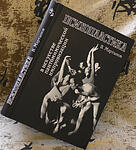

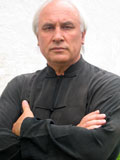 Коан – вопрос к членам Федерации Юн Чун Цюань от президента В.В. Мартынова: «Что Вы сделали для Федерации из того, что не мог бы сделать любой другой за деньги?»
Коан – вопрос к членам Федерации Юн Чун Цюань от президента В.В. Мартынова: «Что Вы сделали для Федерации из того, что не мог бы сделать любой другой за деньги?»
